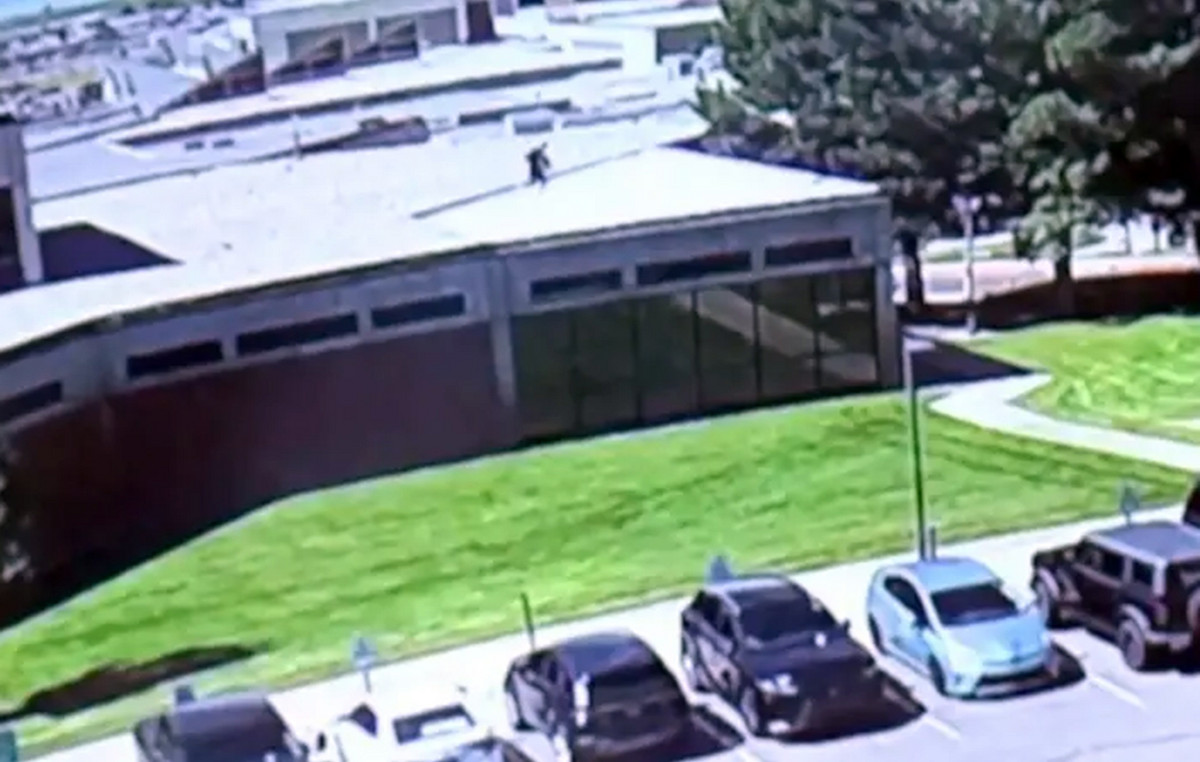Deep inside the Earth there is a ball of solid metal that spins independently of the rotation of our planet, like a spinning top spinning inside a larger spinning top, shrouded in mystery.
This inner core has intrigued researchers since its discovery by Danish seismologist Inge Lehmann in 1936, and how it moves—its speed and direction of rotation—has been the center of a decades-long debate. A growing body of evidence suggests that the core’s rotation has changed dramatically in recent years, but scientists are still divided on what exactly is happening—and what it means.
Part of the problem is that the Earth’s deep interior is impossible to observe or sample directly. Seismologists gain insight into the motion of the inner core by examining how waves from large earthquakes that hit that area behave. Variations between waves of similar strength that passed through the core at different times have allowed scientists to measure changes in the inner core’s position and calculate its rotation.
“Differential rotation of the inner core was proposed as a phenomenon in the 1970s and 1980s, but it was only in the 1990s that seismological evidence was published,” said Dr. Lauren Waszek, professor of physical sciences at James Cook University in Australia.
But researchers have argued over how to interpret these findings, “mainly because of the challenge of making detailed observations of the inner core, given its distance and limited data available,” Waszek said. As a result, “studies that followed in the years and decades that followed disagreed on the rotation rate and also its direction relative to the mantle,” she added. Some analyses even proposed that the core did not rotate at all.
A promising model proposed in 2023 described an inner core that once spun faster than Earth itself but now spins more slowly. For a while, scientists reported, the core’s rotation matched Earth’s rotation. Then it slowed even further, until the core began to move backward relative to the fluid layers around it.
At the time, some experts warned that more data was needed to bolster that conclusion, and now another team of scientists has provided compelling new evidence for that hypothesis about the inner core’s rotation rate. Research published June 12 in the Nature magazine not only confirm the core slowdown, but also support the 2023 proposal that this core slowdown is part of a decades-long pattern of slowdown and acceleration.
The new findings also confirm that changes in rotation speed follow a 70-year cycle, said study co-author Dr. John Vidale, Professor of Earth Sciences at the University of Southern California’s Dornsife College of Letters, Arts and Sciences.
“We’ve been arguing about this for 20 years, and I think this settles the issue,” Vidale said. “I think we’ve settled the debate about whether the inner core moves and what its pattern has been over the last few decades.”
But not everyone is convinced the issue is settled, and how a slowing inner core might affect our planet is still an open question — though some experts say Earth’s magnetic field could come into play.
Magnetic attraction
Buried about 3,200 miles (5,180 kilometers) deep inside the Earth, the solid inner core of metal is surrounded by a liquid outer core of metal. The inner core is composed primarily of iron and nickel, and is estimated to be as hot as the surface of the sun, at about 11,000 degrees Fahrenheit (5,400 degrees Celsius).
Earth’s magnetic field tugs on this solid ball of hot metal, causing it to spin. At the same time, gravity and the flow of the fluid outer core and mantle drag the core along. Over many decades, the push and pull of these forces causes variations in the core’s rotation speed, Vidale said.
The oscillating motion of the metal-rich fluid in the outer core generates electric currents that power Earth’s magnetic field, which shields our planet from deadly solar radiation. While the inner core’s direct influence on the magnetic field is unknown, scientists previously reported in 2023 that a slower-spinning core could potentially affect it and also slightly shorten the length of a day.
When scientists try to “see” all the way through the planet, they usually track two types of seismic waves: pressure waves, or P waves, and shear waves, or S waves. P waves move through all types of matter; S waves move only through solids or extremely viscous liquids, according to the U.S. Geological Survey.
Seismologists noticed in the 1880s that S waves generated by earthquakes did not pass completely through the Earth, and so they concluded that the Earth’s core was molten. But some P waves, after passing through the Earth’s core, emerged in unexpected places—a “shadow zone,” as Lehmann called it—creating anomalies that were impossible to explain.
Lehmann was the first to suggest that deflected P waves might be interacting with a solid inner core within the liquid outer core, based on data from a large earthquake in New Zealand in 1929.
By tracking seismic waves from earthquakes that have passed through Earth’s inner core along similar paths since 1964, the authors of the 2023 study found that the rotation followed a 70-year cycle. In the 1970s, the inner core was spinning slightly faster than the planet. It slowed down around 2008, and from 2008 to 2023 it began moving slightly in reverse, relative to the mantle.
Future of core rotation
For the new study, Vidale and his co-authors looked at seismic waves produced by earthquakes in the same locations at different times. They found 121 examples of such earthquakes occurring between 1991 and 2023 in the South Sandwich Islands, an archipelago of volcanic islands in the Atlantic Ocean east of the southernmost tip of South America. The researchers also analyzed core-penetrating shock waves from Soviet nuclear tests conducted between 1971 and 1974.
When the core spins, Vidale said, it affects the wave’s arrival time. Comparing the timing of seismic signals as they touched the core revealed changes in the core’s rotation over time, confirming the 70-year rotation cycle. According to the researchers’ calculations, the core is about to start accelerating again.
Compared to other seismographic studies of the core that measure individual earthquakes as they pass through the core—regardless of when they occur—using only paired earthquakes reduces the amount of usable data, “making the method more challenging,” Waszek said. However, doing so also allowed scientists to measure changes in the core’s rotation with greater precision, according to Vidale. If his team’s model is correct, the core’s rotation will begin to accelerate again in about five to 10 years.
The seismographs also revealed that during its 70-year cycle, the core’s rotation slows down and speeds up at different rates, “which will require some explanation,” Vidale said. One possibility is that the inner metal core is not as solid as expected. If it deforms as it spins, that could affect the symmetry of its rotation speed, he said.
The team’s calculations also suggest that the nucleus has different rotation rates for forward and backward motions, which adds “an interesting contribution to the discourse,” Waszek said.
But the depth and inaccessibility of the inner core mean uncertainties remain, she added. As for whether the debate over the core’s rotation is truly over, “we need more data and improved interdisciplinary tools to investigate this further,” Waszek said.
‘Full of potential’
Changes in the core’s rotation — though they can be tracked and measured — are virtually imperceptible to people on Earth’s surface, Vidale said. When the core spins more slowly, the mantle speeds up. That change makes Earth spin faster, and the length of a day shortens. But such rotation changes translate into mere milliseconds in the length of a day, he said.
“In terms of that effect on a person’s life?” he said. “I can’t imagine it means much.”
Scientists study the inner core to learn how Earth’s deep interior formed and how activity connects throughout the planet’s subsurface layers. The mysterious region where the liquid outer core surrounds the solid inner core is especially interesting, Vidale added. As a place where liquid and solid meet, this boundary is “full of potential for activity,” just like the boundary between the core and mantle and the boundary between the mantle and crust.
“We can have volcanoes at the boundary of the inner core, for example, where solid and fluid meet and move,” he said.
Because the inner core’s rotation affects the motion in the outer core, the inner core’s rotation is thought to help power Earth’s magnetic field, though more research is needed to tease out its precise role. And there’s still much to learn about the structure of the inner core, Waszek said.
“New and emerging methodologies will be central to answering open questions about the Earth’s inner core, including rotation.”
Earth’s core has stopped spinning and could reverse, study suggests
Source: CNN Brasil
Charles Grill is a tech-savvy writer with over 3 years of experience in the field. He writes on a variety of technology-related topics and has a strong focus on the latest advancements in the industry. He is connected with several online news websites and is currently contributing to a technology-focused platform.







